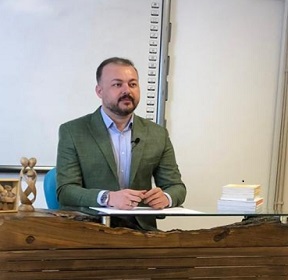
Sajad Haghshenas
Institute of cognitive science studying IranTitle: Central auditory perception disorder (capd) in neurodevelopmental deficit
Abstract:
Auditory processing disorder (APD) is a hearing problem that affects about 3%–5% of school-aged children. Kids with this condition, also known as central auditory processing disorder (CAPD), can't understand what they hear in the same way other kids do. This is because their ears and brain don't fully coordinate. Something interferes with the way the brain recognizes and interprets sounds, especially speech. With the right strategies, kids with APD can be successful in school and life. Early diagnosis is important. If the condition is not identified and managed early, a child is at risk for listening and learning problems at home and school.
Trouble Understanding Speech
Kids with APD are thought to sense sound normally because they usually can hear sounds that are delivered one at a time in a very quiet environment (such as a sound-treated room). The problem is that they usually don't easily recognize slight differences between sounds in words, even when the sounds are loud enough to be heard. These kinds of problems usually happen in a poor listening situation — such as when there's background noise or in a reverberant room like an auditorium — which often is the case in social situations. Kids with APD can have trouble understanding what is being said to them when they're in noisier places like a classroom, playground, sports event, school cafeteria, or party.
What Are the Signs & Symptoms of Auditory Processing Disorder?
Symptoms of APD can range from mild to severe and can take many different forms. If you think your child might have a problem processing sounds, ask yourself:
- Does my child often mishear sounds and words?
- Are noisy environments overwhelming when my child is trying to listen?
- Does my child's listening behaviors and performance improve in quieter settings?
- Does my child have trouble following verbal directions, whether simple or complicated?
- Does my child have trouble with spelling or phonics?
- Are verbal (word) math problems hard for my child?
- Are conversations hard for my child to follow?
APD is often misunderstood because many of its symptoms are similar to those found in other disorders. Also, APD symptoms can be hidden by other problems, like speech-language delays, learning disabilities, attention deficit hyperactivity disorder (ADHD), and depression. Auditory memory deficits, auditory attention problems, and sound sensitivity are not symptoms of APD, but also may involve trouble with using sound information correctly. Seeing an audiologist, and other related specialists, can help parents understand these conditions.
What Causes Auditory Processing Disorder?
Often, the cause of a child's APD isn't known. Evidence suggests that children with head trauma, lead poisoning, seizure disorder, or chronic ear infections are more at risk. Sometimes, there can be more than one cause.
How Is Auditory Processing Disorder Diagnosed?
If you think your child is having trouble hearing or understanding when people talk, have an audiologist (hearing specialist) examine your child. The most common way to diagnose APD is to use a specific group of listening tests. Audiologists often look for these main problem areas in kids with APD:
- Auditory figure-ground: This is when a child has trouble understanding speech when there is speech babble or ambient noise in the background. Noisy, loosely structured or open-air classrooms can be very frustrating for a child with APD.
- Auditory closure: This is when a child can't "fill in the gaps" of speech when it is more challenging. This can happen in a quieter situation but is more common when the speaker's voice is too fast or is muffled, making it hard for the child to make sense of the sounds and words.
- Dichotic listening: This is when a child has trouble understanding competing, meaningful speech that happens at the same time. For example, if a teacher is talking on one side of the child and another student is talking on the other side, the child with APD cannot understand the speech of one or both of the speakers.
- Temporal processing: This is the timing of a child's processing system, which helps them recognize differences in speech sounds (such as mat versus pat). It also helps them understand pitch and intonation (for example, asking a question instead of giving a command), understand riddles and humor, and make inferences.
- Binaural interaction: This is the ability to know which side speech or sounds are coming from, and to localize sound in a room. Although less common, this problem happens in children with a history of brain trauma or seizure disorders.
Most traditional APD tests require a child to be at least 7 years old. So, many kids aren't diagnosed until first grade or later. Newer electrophysiology tests (which use noninvasive electrodes to check the body's response to speech) can give some early information about the central auditory system in kids younger than 7.
Biography:
Most traditional APD tests require a child to be at least 7 years old. So, many kids aren't diagnosed until first grade or later. Newer electrophysiology tests (which use noninvasive electrodes to check the body's response to speech) can give some early information about the central auditory system in kids younger than 7.
